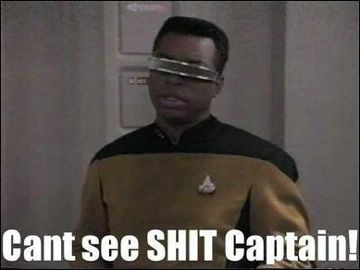A discussion in a facebook group recently got me thinking. One of my friends whom I always like talking shop with was asking about night sights for the Beretta PX4 that I’ve had for several months. I explained that I purchased some Trijicon HD sights for it, but upon inspection, noticed they were about the same dimension as the factory sights (no precision improvement), and the bright orange front sight insert looked about the same as the hobby paint home-job I had done myself. I returned the sights and saved $150. I didn’t see the incremental increase in utility from 3 tritium vials for $150. Granted, not all factory sights are as good as the ones on the PX4 (looking at you Glock), but I think the usual “YOU MUST HAVE TRITIUM ON A DEFENSIVE GUN” mantra might need to be reevaluated. Or at least considered on a case by case basis.
We then talked about lasers for the PX4, which started getting my wheels turning about choosing between fancy sights, or fancy lasers.
To further make me question my stance on tritium, one of my mentors, Paul Sharp, uses narrow fiber optic sights on his duty gun. So do several other of my meat-eating door-kicking buddies. This flies in the face of common advice. “The fiber will break and you won’t have a front sight”. Well, almost no one I know uses their gear more than Paul, and if they work for him… who am I to dismiss his findings? Besides, if the fiber falls out, you still have the steel cage it sits in, so you’re not totally S.O.L. AND FO sight sets also are less expensive at $50-75 depending on maker.
So I asked myself this question:
After nearly 10 years of taking self-defense and shooting very seriously and about 500 hours of training and countless hours of practice, if I only had $200ish to spend on a sighting system for a pistol, would I choose Tritium night sights, or a (used) laser module?
I’ve been thinking about it. My conclusion is that hands down I’d choose a laser.

Why Not Tritium?
- If you only have enough light to be able to use your tritium, then you don’t have enough light to identify your target. This can be very bad. What then follows is that you must have enough light to identify your target. If you do have enough light to identify your target, then your tritium becomes less critical because you can see the outline of your sights. All pistols should have a source of white light near them. Whether it’s carried in a pocket, in a nightstand, or mounted to an accessory rail. Just don’t use the rail mounted light to ID targets, only for shooting. Greg Ellifritz talks about WML issues here.

- In dusk/transitional lighting, even if your fiber optic front sight (or bright paint) isn’t clearly visible, you still have the silhouette of the sights to be able to make hits. So tritium isn’t the only solution here.
- For me, the most useful part of the tritium sights I’ve had experience with has been the large white/orange/yellow plastic that generally surrounds the tritium itself. Once again, this can be replicated on factory sights for pennies.
- One definite plus is that in pure darkness, the little glowing tritium vials allow you to visually acquire the pistol from the nightstand. I, however, have a 3 year old, and this isn’t an option for me, so it’s not that helpful.
Why A Laser?
- They don’t punish you for being threat focused in an adrenalized state. If you lack the discipline/training to bring your focus to the front sight during a shooting, seeing the red spot on the target area allows rapid shooting.
- Awkward shooting positions are made easier.
- Increased hit chance in transitional light areas (0ver iron sights) where the target is otherwise confirmed as a shoot.
- Allow those with poor eye-sight a way to make precision hits.
- Retention shooting accuracy improves (from a compressed ready, or a “2”)
- Less dedicated shooters require less practice to be able to make good hits, assuming their trigger control issues are sorted out. I’ve seen this with several shooters who had trouble with iron sights for whatever reason, but rapidly improved when a laser module was introduced to the mix. Since my wife might have to use my gun to shoot someone off of me in a home invasion type scenario, I’d like to give her the best possible chance of not shooting me in the process.
- As Claude explained to me, the way to use the laser is not to hunt for the laser on the target, but rather to present the gun in a normal fashion and use whatever you happen to pick up first, sights or laser dot.
- Downsides: Batteries. Yeah, but hopefully the stigma of needing batteries for sighting systems has gone down since everyone has a red dot on their rifle now. Set a google calendar reminder and change them every 6 months. Besides, if the laser fails, you still have your iron sights. Practicing with the laser off, simulating battery failure, is also important.
Closing
I know I’m not the first person to say lasers are worth your time. I was just posting the hypothetical about making the resource constrained decision between tritium and a laser. Next time I have access to a range and I can shoot at dusk/dark, I’m going to take a selection of pistols with different sighting setups (irons, fiber optic, tritium, and lasers) and on a timer record multiple repetitions of shooting from various ready positions, and with shooters of various skill levels. I’m pretty confident the numbers will show I’m on the right track. I’ll report back.



